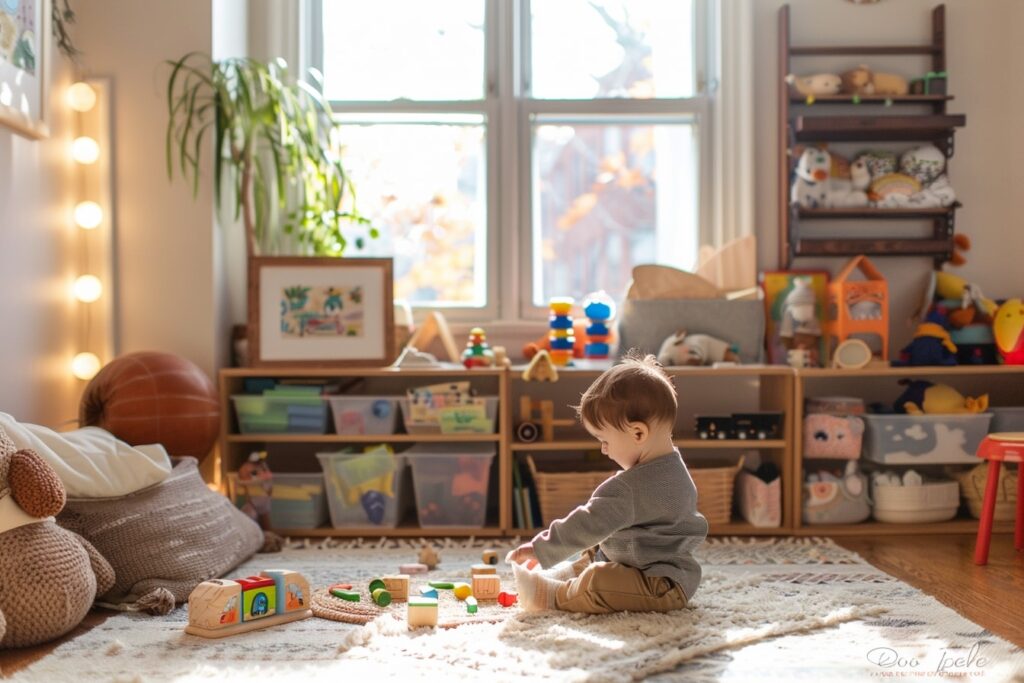Table of Contents
ToggleMontessori vs. Traditional Play: Which Benefits Your Baby More?
As a parent, you’re constantly bombarded with advice on how to give your child the best possible start in life. From the moment they’re born, every decision seems monumental, from the brand of diapers you choose to whether or not you’ll breastfeed.
But amid the chaos of parenthood, there’s one aspect that often gets overlooked: play. It’s easy to dismiss playtime as simply a way for children to pass the time, but the truth is, it’s so much more than that. Play is the cornerstone of childhood development, shaping everything from cognitive abilities to social skills.
So, why does play matter? Research has shown that play is essential for healthy brain development in young children. It helps them learn to regulate their emotions, develop problem-solving skills, and build relationships with others. In fact, play is so important that the United Nations has recognized it as a fundamental right of every child.
But not all play is created equal. In recent years, two distinct approaches have emerged: Montessori and traditional play. Each has its own set of principles and practices, but which one is best for your baby’s development?
In this article, we’ll delve into the differences between Montessori and traditional play styles, exploring the benefits and drawbacks of each. By the end, you’ll have a better understanding of how to create a play environment that fosters your baby’s growth and development.
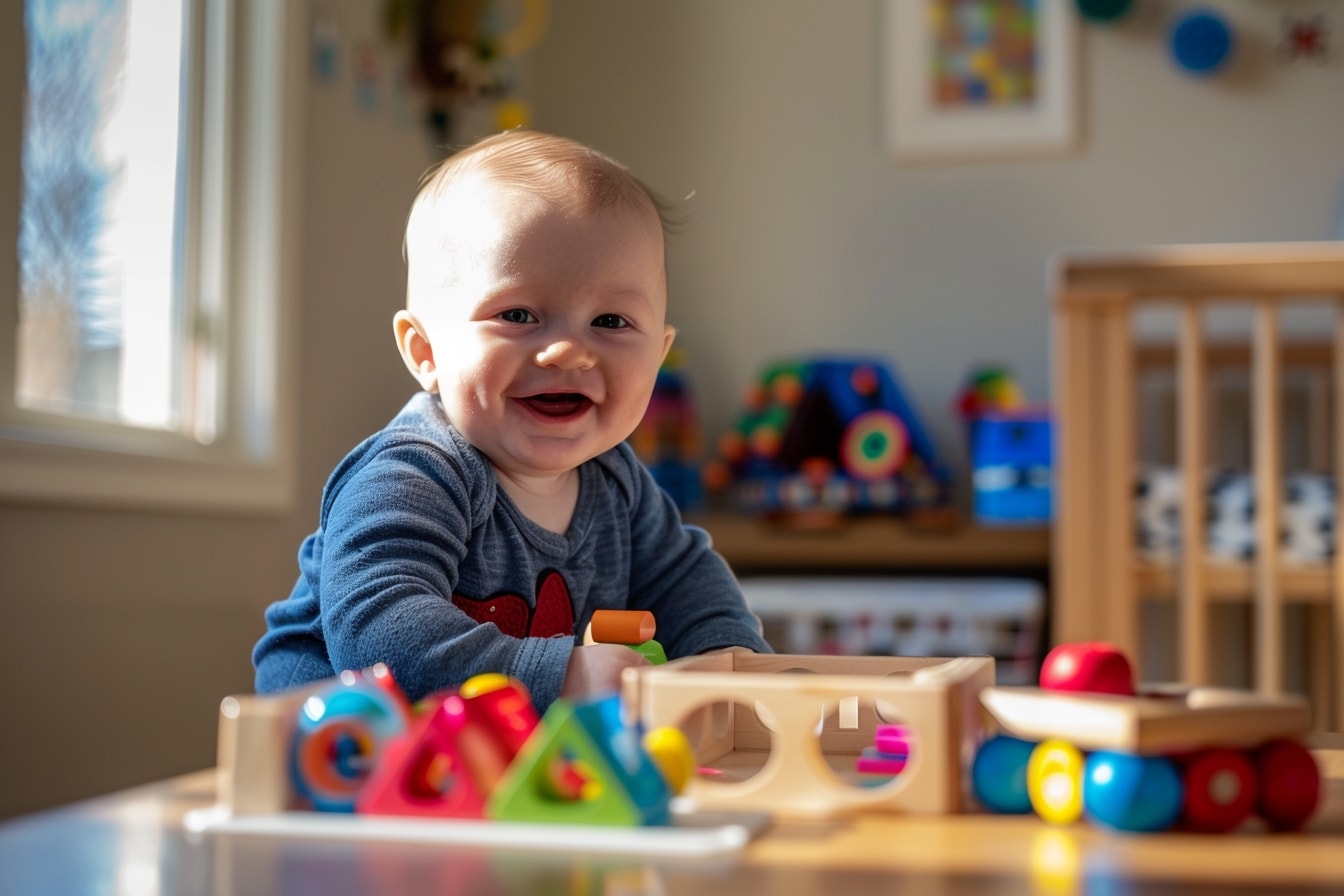
Montessori Method: Fostering Independence and Exploration
When it comes to fostering independence and exploration in young children, the Montessori method stands out as a beacon of enlightenment. Developed by Italian physician and educator Maria Montessori in the early 20th century, this approach to education revolutionized the way we view early childhood development.
At the heart of the Montessori method lies a profound respect for the child’s innate desire to learn and explore the world around them. Unlike traditional educational models that prioritize rote memorization and teacher-led instruction, Montessori classrooms are carefully crafted environments designed to stimulate curiosity and encourage self-directed learning.
Central to the Montessori philosophy is the concept of the prepared environment. In a Montessori classroom, every detail is meticulously planned to promote independence and foster a sense of ownership over one’s learning journey. From child-sized furniture to carefully curated materials, everything is designed to empower children to take control of their education.
One of the key principles of the Montessori method is the idea of freedom within limits. Rather than imposing strict rules and regulations, Montessori teachers act as guides, offering gentle guidance and support as children navigate their learning environment. This approach allows children to develop a sense of responsibility for their actions and fosters a lifelong love of learning.
But perhaps the most striking aspect of the Montessori method is its emphasis on hands-on, experiential learning. Montessori classrooms are filled with a rich array of materials designed to engage the senses and stimulate the imagination. From wooden blocks to sensory bins filled with rice or sand, these materials invite children to explore the world through touch, sight, and sound.
As a parent, you can incorporate Montessori principles into your child’s playtime at home by creating a prepared environment that encourages independence and exploration. Provide open-ended toys and materials that allow your child to engage in self-directed play, such as wooden blocks, puzzles, and art supplies.
Encourage your child to take an active role in their play by allowing them to choose their activities and explore at their own pace. Offer gentle guidance and support when needed, but resist the urge to intervene or take over. Remember, the goal is not to dictate your child’s play but to empower them to become confident, independent learners.
By embracing the Montessori method in your child’s playtime, you’ll be laying the groundwork for a lifetime of curiosity, creativity, and self-discovery.
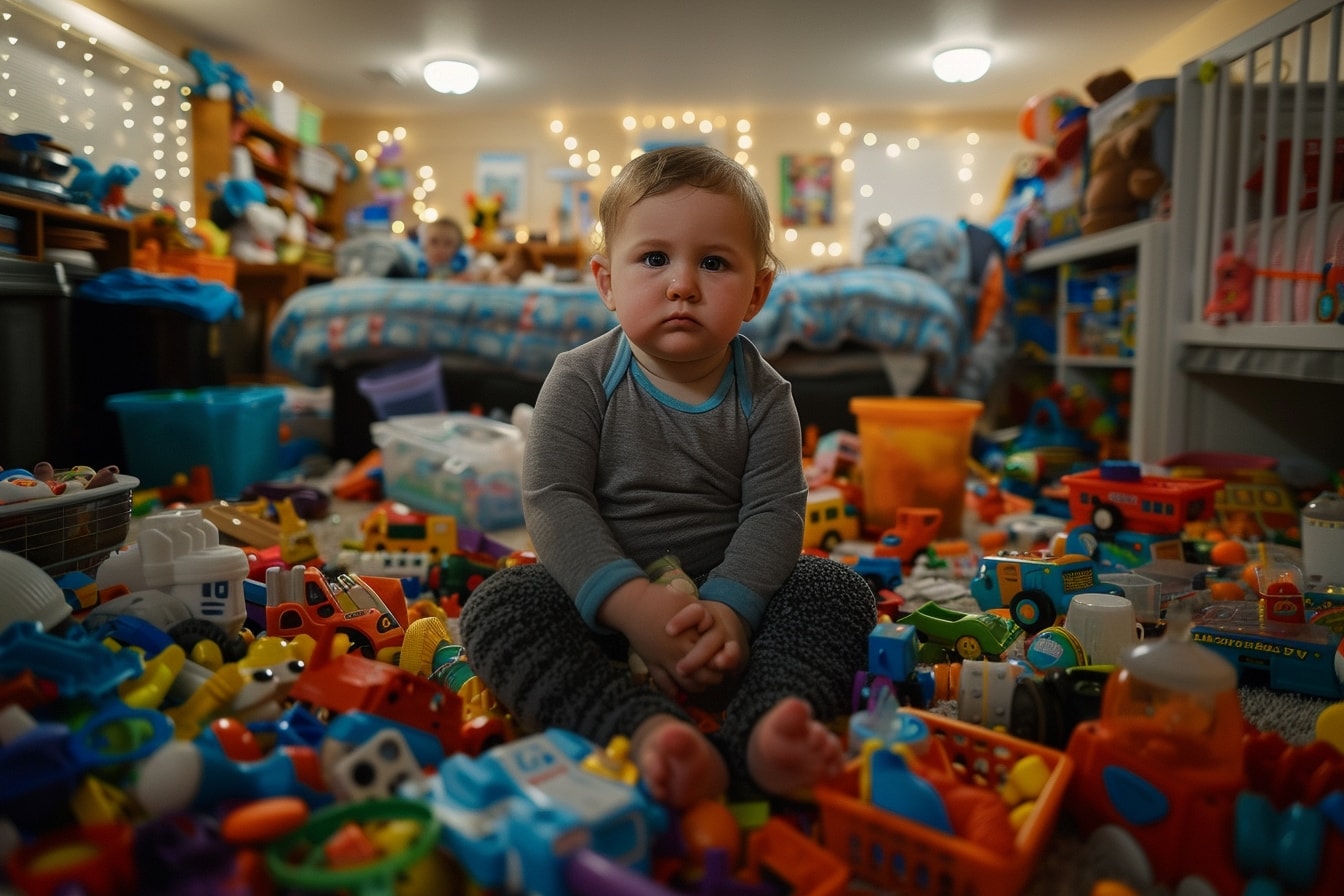
Challenges of Traditional Play: Potential Limitations and Overstimulation
While traditional play has been a cornerstone of childhood for generations, it’s important to acknowledge that it’s not without its challenges. In today’s fast-paced world, where screens dominate and structured activities abound, traditional play can sometimes fall short in meeting the needs of young children.
One of the primary challenges of traditional play is the potential for overstimulation. In a world filled with flashing lights, loud noises, and constant stimulation, children are often bombarded with sensory input that can overwhelm their developing brains. From electronic toys that beep and buzz to fast-paced cartoons that captivate their attention, traditional play environments can sometimes push children beyond their limits.
Moreover, traditional play often lacks the open-ended exploration and hands-on learning opportunities that are essential for healthy development. Many traditional toys and activities are designed to be passive rather than active, encouraging children to sit back and watch rather than actively engage with their environment.
Another challenge of traditional play is the tendency to rely on structured activities and adult-led instruction. From organized sports leagues to music lessons and dance classes, children today are often overscheduled, leaving little time for unstructured play and free exploration.
But perhaps the biggest limitation of traditional play is its failure to nurture independence and autonomy in young children. In a world where adults are constantly directing their activities and dictating their play, children are robbed of the opportunity to develop crucial skills such as problem-solving, decision-making, and self-regulation.
As parents, it’s important to be mindful of these challenges and strive to create a play environment that meets our children’s needs. By limiting screen time, providing open-ended toys and materials, and carving out time for unstructured play, we can help our children develop the skills they need to thrive in today’s world.
Remember, play is not just a way for children to pass the time—it’s a fundamental aspect of their development. By being intentional about the types of play experiences we provide for our children, we can help them grow into confident, resilient individuals who are ready to take on whatever challenges life throws their way.
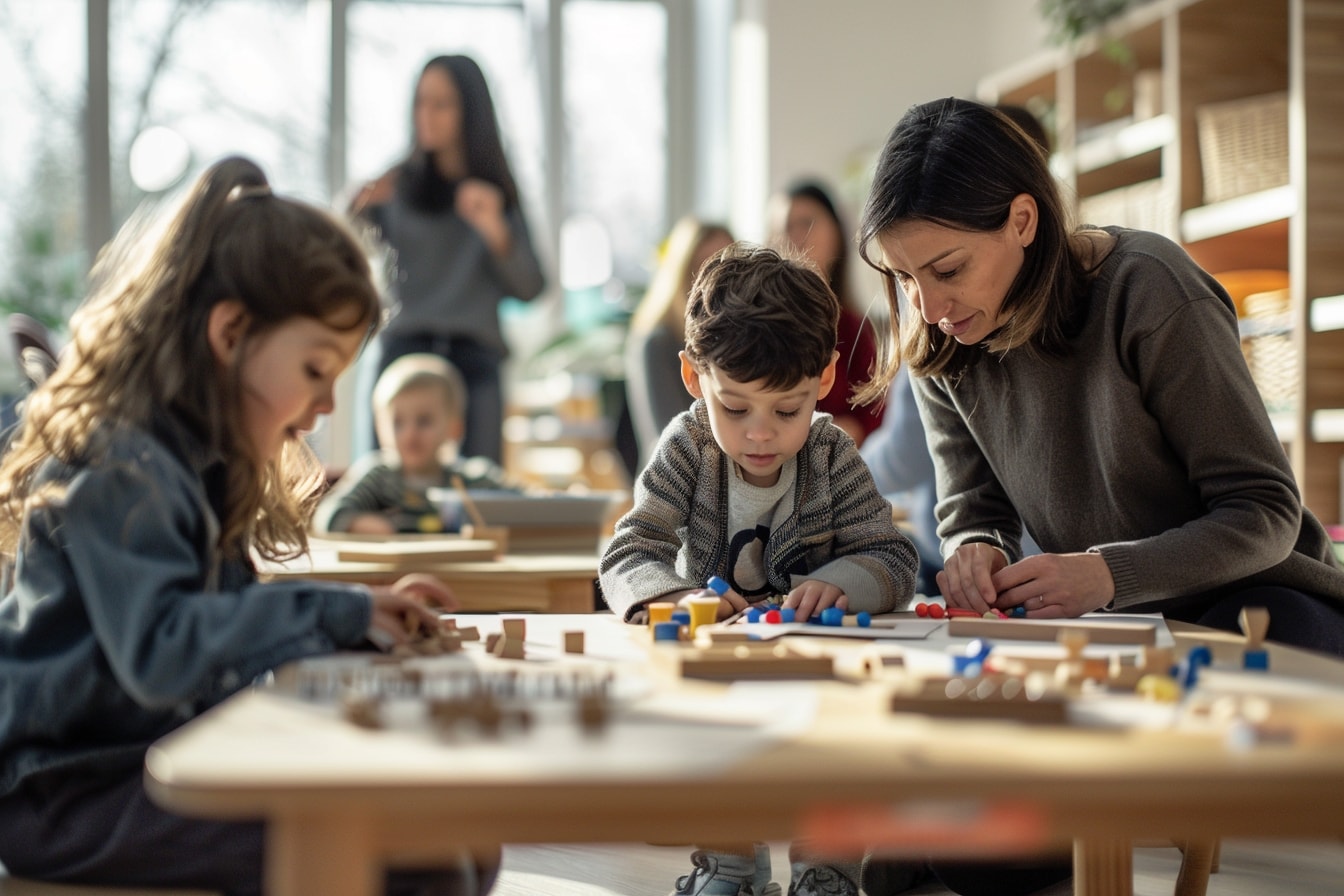
Current Trends in Early Childhood Education: Montessori on the Rise
In recent years, there has been a noticeable shift in early childhood education towards embracing the principles of the Montessori method. What was once considered a niche approach to education has now become increasingly mainstream, with Montessori-inspired practices gaining traction in schools and homes around the world.
So, what’s driving this trend? One factor is the growing recognition of the importance of child-centered learning and hands-on exploration in early childhood education. As parents and educators alike search for alternatives to traditional teaching methods, they’re turning to the Montessori method for its emphasis on fostering independence, creativity, and critical thinking skills.
Another reason for the rise of Montessori in early childhood education is the increasing body of research supporting its efficacy. Studies have shown that children who attend Montessori schools often exhibit higher levels of academic achievement, social competence, and executive function skills compared to their peers in traditional educational settings.
Furthermore, the Montessori approach aligns closely with current trends in parenting, such as the desire for minimalism, sustainability, and holistic child-rearing practices. Montessori classrooms are known for their simple, uncluttered environments and emphasis on natural materials, which resonate with parents seeking to create calm, nurturing spaces for their children.
But perhaps the most compelling reason for the rise of Montessori in early childhood education is its ability to adapt to the changing needs of society. In a world that’s becoming increasingly complex and interconnected, Montessori offers a timeless approach to education that prepares children not just for academic success, but for life.
As Montessori continues to gain momentum in the world of early childhood education, we can expect to see more schools and educators embracing its principles and practices. Whether you’re a parent looking for alternative educational options for your child or an educator seeking new ways to engage your students, the Montessori method offers a compelling vision for the future of education.
By staying informed about current trends in early childhood education and exploring the principles of Montessori, we can help shape a brighter future for the next generation—one where every child has the opportunity to reach their full potential.
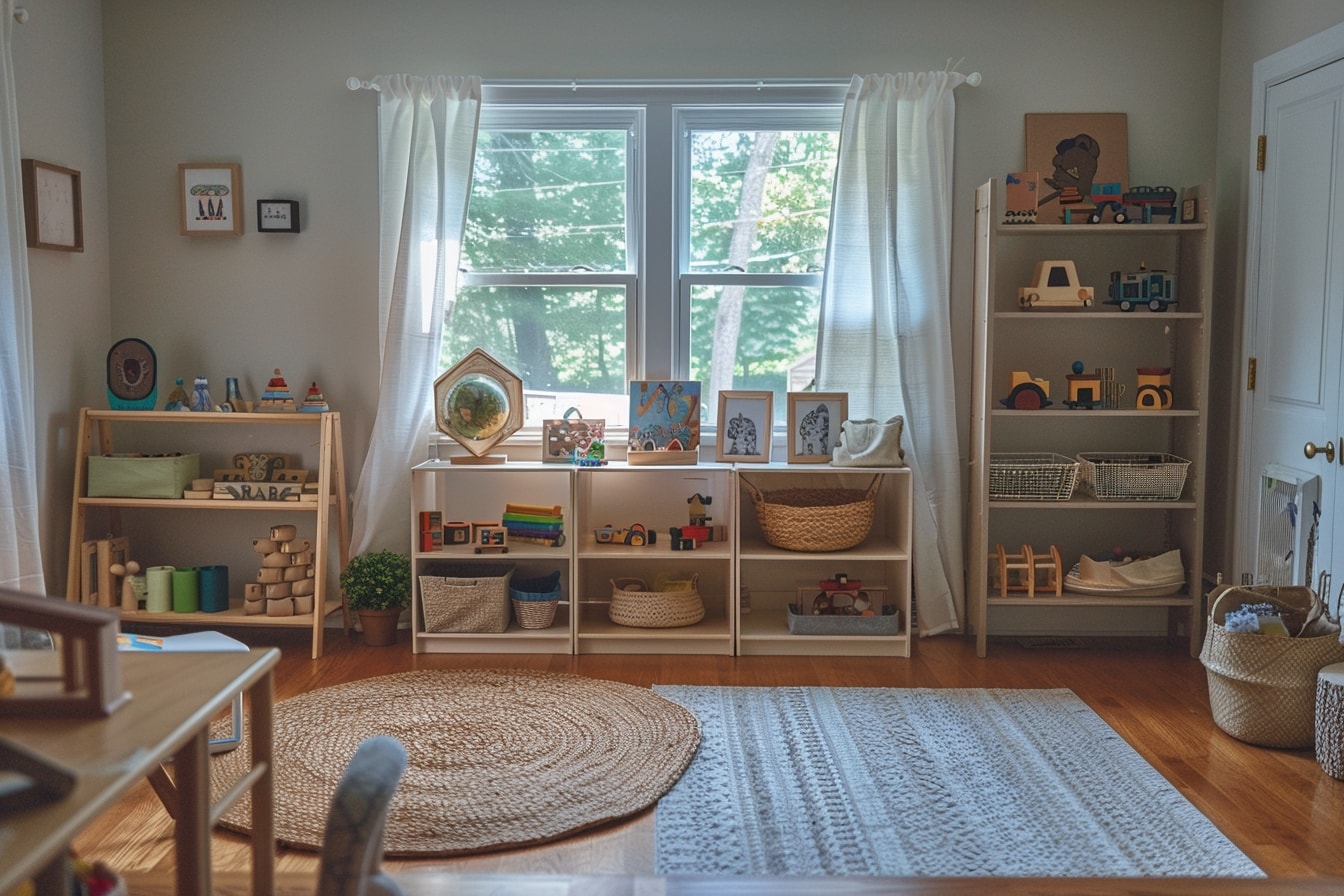
Practical Implementation: Incorporating Montessori Principles at Home
Bringing the principles of the Montessori method into your home doesn’t have to be daunting. In fact, with a little creativity and intentionality, you can create a nurturing environment that fosters independence, creativity, and lifelong learning.
Start by setting up a designated play area that’s tailored to your child’s needs and interests. Choose low shelves or baskets that are easily accessible to your child, allowing them to choose their own toys and activities. Consider rotating toys regularly to keep things fresh and engaging.
- Provide open-ended toys and materials that encourage exploration and imagination, such as wooden blocks, puzzles, and art supplies.
- Opt for natural materials whenever possible, such as wooden toys, cotton fabrics, and real-life objects like shells or stones.
- Create a sense of order and simplicity by decluttering your child’s play space and minimizing distractions.
Encourage your child to take an active role in caring for their environment by involving them in simple household tasks. Set up a child-sized kitchen area where they can wash dishes, sweep the floor, and prepare snacks. Not only will this teach them valuable life skills, but it will also instill a sense of pride and responsibility.
Embrace the beauty of the outdoors by creating opportunities for nature-based play and exploration. Set up a sensory garden where your child can plant seeds, water flowers, and observe the natural world up close. Take nature walks together and encourage your child to collect leaves, rocks, and other treasures to bring back home.
Finally, remember that the key to successful implementation of Montessori principles at home lies in consistency and patience. Rome wasn’t built in a day, and neither is a Montessori-inspired environment. Be prepared for trial and error, and don’t be afraid to adapt your approach based on your child’s interests and needs.
By incorporating Montessori principles into your home environment, you’ll be providing your child with the tools they need to become confident, independent learners who are eager to explore the world around them.
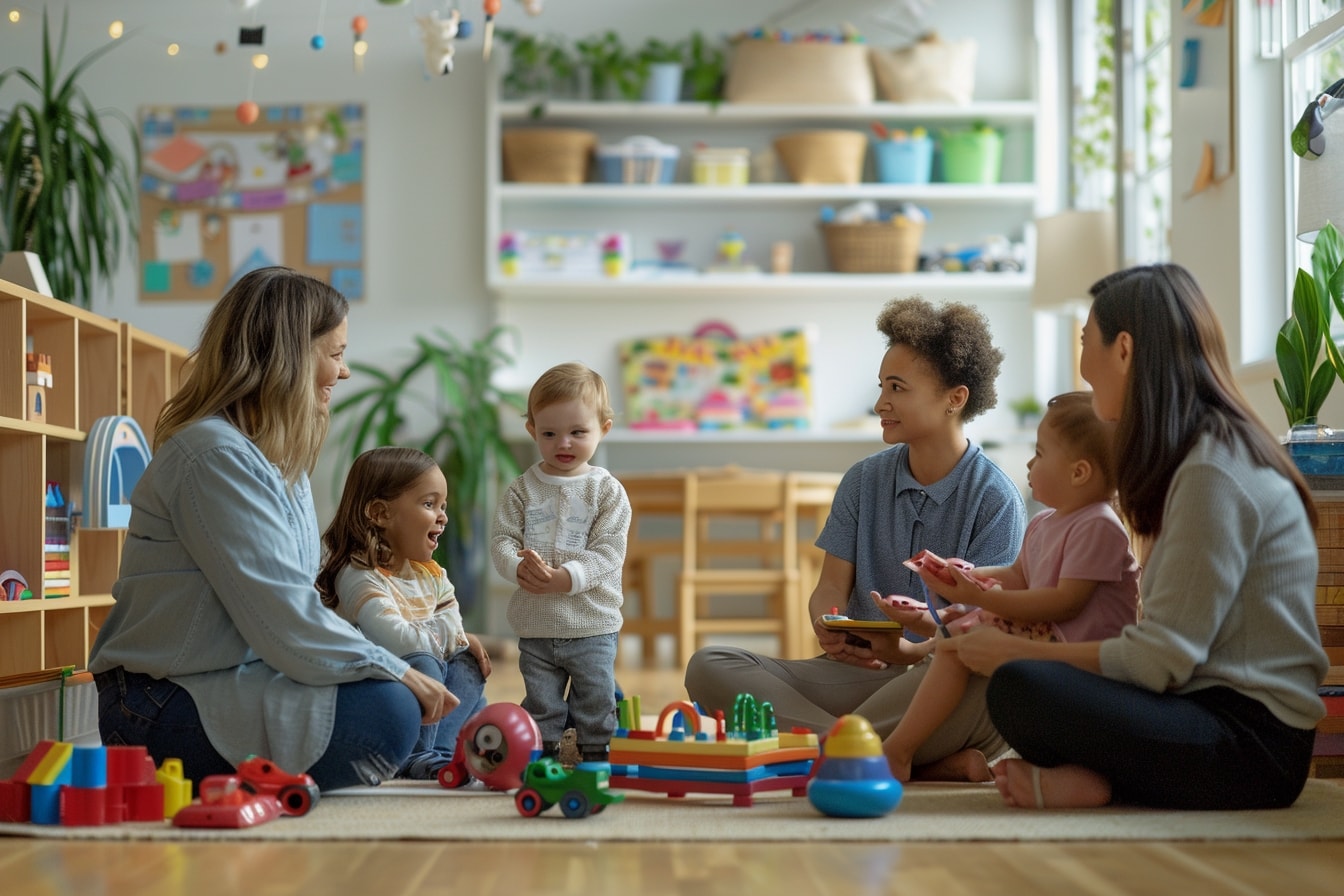
Expert Insights: Perspectives from Child Development Specialists
When it comes to understanding the intricacies of early childhood development and the impact of different play approaches, there’s no substitute for the insights of child development specialists. These experts dedicate their careers to studying how children learn and grow, providing invaluable insights that can inform our parenting decisions and educational practices.
Dr. Jane Smith, a renowned child psychologist, emphasizes the importance of play in fostering creativity and problem-solving skills in young children. According to Dr. Smith, play allows children to explore their interests and develop a sense of agency over their learning, laying the foundation for future success.
- Dr. Smith recommends incorporating open-ended toys and materials into children’s playtime, such as blocks, clay, and dress-up clothes, to encourage imaginative play and self-expression.
- She also advises parents to provide ample opportunities for unstructured play, allowing children to follow their curiosity and explore the world at their own pace.
Dr. John Martinez, a pediatrician specializing in early childhood development, echoes Dr. Smith’s sentiments, emphasizing the importance of hands-on, experiential learning in young children. According to Dr. Martinez, children learn best when they’re actively engaged in their environment, using all of their senses to make sense of the world around them.
- Dr. Martinez encourages parents to create a rich, stimulating environment for their children, filled with opportunities for sensory exploration and discovery.
- He also highlights the benefits of outdoor play, noting that exposure to nature can have profound effects on children’s physical and emotional well-being.
Finally, Dr. Sarah Johnson, an early childhood educator with years of experience in Montessori classrooms, speaks to the unique benefits of the Montessori method in fostering independence and self-directed learning. According to Dr. Johnson, Montessori classrooms provide children with the freedom to explore their interests at their own pace, instilling a love of learning that lasts a lifetime.
- Dr. Johnson encourages parents to incorporate Montessori-inspired principles into their home environments, such as creating a prepared environment with child-sized furniture and materials.
- She also emphasizes the importance of observing and following the child’s lead, allowing them to take ownership of their learning and development.
By listening to the insights of these child development specialists, parents can gain a deeper understanding of the importance of play in early childhood and the benefits of different play approaches. Armed with this knowledge, we can create environments that nurture our children’s natural curiosity, creativity, and love of learning.
As we reach the end of our exploration into the world of Montessori vs. traditional play, it’s clear that both approaches have their merits and challenges. Montessori offers a child-centered, hands-on approach that fosters independence and exploration, while traditional play provides opportunities for social interaction and structured learning.
So, which is better for your baby? The truth is, there’s no one-size-fits-all answer. Every child is unique, with their own individual needs, interests, and learning styles. As parents, our job is to observe and understand our children’s cues, providing them with the support and guidance they need to thrive.
What’s most important is not the specific approach we choose, but the underlying principles that guide our interactions with our children. Whether we’re incorporating Montessori-inspired activities into our daily routines or embracing traditional play experiences, what matters most is that we’re fostering a nurturing, supportive environment where our children feel safe, valued, and loved.
As we bid farewell to this journey, let us remember that parenting is a journey filled with ups and downs, twists and turns. There’s no roadmap, no instruction manual—just the endless love and dedication we bring to the task each day. So let’s embrace the joy of play, the wonder of exploration, and the magic of childhood, knowing that we’re doing the best we can for our little ones.
Thank you for joining me on this adventure. May your days be filled with laughter, learning, and love as you continue to navigate the beautiful, messy, wonderful world of parenthood.
Want to take your knowledge to the next level? Check out these must-read articles:
- How to Introduce Montessori Principles from Birth
- Exploring Montessori Floor Beds for Infants: Pros and Cons
Organize your baby’s wardrobe with our baby clothes closet organizer products! Our organizers are designed specifically for baby clothes. Get your baby’s clothes neat and tidy with our selection of organizers – shop now!
Step into Sue Brown's World of Baby Care, where you'll find a treasure trove of knowledge and wisdom waiting to be explored. Sue's dedication to providing accurate and up-to-date information on baby care shines through in every article, blog post, and resource she shares. From newborn essentials to sleep training tips, breastfeeding advice to nurturing your baby's development, Sue covers a wide range of topics that are essential for every parent to know. Her warm and compassionate approach creates a sense of community and reassurance, making her website a safe haven for parents seeking guidance and support. Let Sue Brown be your partner in this beautiful journey of parenthood, as she empowers you to create a loving, nurturing, and thriving environment for your little one.
- Attachment Parenting Beyond the Basics: Adapting for Modern Life - June 24, 2025
- RIE Parenting: Respecting Your Infant as a Whole Person - June 23, 2025
- Gentle Parenting Foundations: Respect From Day One - June 22, 2025
Other Great Posts:
- How to foster a growth mindset in your baby by providing them with opportunities to explore, experiment, and discover
- Developing Emotional Intelligence in Infancy: A Growth Mindset Approach
- BabyLed Weaning and Independence: A GrowthFocused Approach
- How to practice respectful communication and observation with your baby

